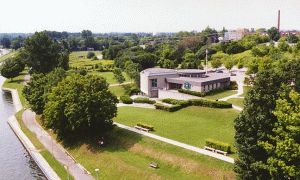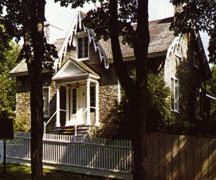UEL Bus Trips

Our bus trip will begin with pickups in Toronto at Kipling and then Don Mills. Historic Port Hope is our first stop.
During the American Revolution, Walter Butler of Butler's Rangers called us "Fat Fire Creek". After the Revolution of 1775 the wild ranger soldiers who fought with the British and learned native languages and culture, turned to the fur trade. Lieutenant Peter Smith had a traders' cabin here by 1788. He traded here for a decade before moving to Kingston where he became wealthy. The area was called Smith's Creek for another thirty years after he left.
Elias Smith and Captain Jonathan Walton received extensive land grants conditional on them settling forty families. The first boatload of Empire Loyalists arrived in 1793 and by 1799 the required families had been settled.

As the town grew, it did not forget its ties with the United States, a tie very noticeable in much of its local architecture. With an uncanny dedication to its past, much of that architecture remains today. During the latter part of the nineteenth century, with the decline of the lumber trade and the growth of larger industrial centres elsewhere, Port Hope's period of rapid growth came to an end. Since then, many areas of the town, including the downtown commercial area, have remained relatively unchanged. Unlike many communities, Port Hope has suffered neither economic decline nor runaway development. Thus somewhat like a time capsule, it captures the flavour of small town Ontario during the late 1800s.
We will tour Port Hope with Peter Bolton, retired school teacher and ardent genealogist and historian showing us the sites from our bus with a short walk to two and a tea break.

On to Peterborough via the byways and highways which opened up the area in the heyday of Port Hope. First stop is the picnic area at the Heritage Museum Pavilion where Kawartha Branch will host us for lunch. While here, there will be time to visit, relax, and tour the Centennial Museum, the Liftlock and the Visitor Centre just down the hill. The Museum's permanent exhibitions highlight the First Nations peoples, the arrival of European immigrants to Peterborough with special emphasis on the Peter Robinson immigration of 1825, and the growth of Peterborough from a town to a city.
From Armour Hill we will proceed to the Canadian Canoe Museum which houses the world's largest and most significant collection of paddled watercraft, representing a diverse range of design and construction techniques. Every craft in the collection has a story to tell about the people who built and used it. By collecting, preserving and displaying these craft, the Museum provides an important and unique insight into Canada's rich cultural heritage.

Our guided tour will highlight the collection which features examples of Aboriginal craft that span the continent of North America. They range from great cedar whaling dugouts of the West Coast, to fine bark canoes used along the rivers of Eastern Canada to the skin kayaks of the Arctic. These vessels exemplify the skills and ingenuity of the builders who constructed them using available resources from the land and sea.
Period "Tea is Served" at Hutchinson House, a living museum, owned and operated by the Peterborough Historical Society, which depicts 19th century Ontario life. The house was built in 1836 by the town's residents for Dr. John Hutchison, his wife and five children. The main floor and keeping-room have been restored to the 1840's when the Hutchisons lived there. Dr. Hutchison died in 1847.

From downtown Peterborough the bus will take us north and east along the Otonabee River to Lakefield. Here is "Christ Church" with its fabled history, and the churchyard (cemetery) where Samuel Strickland and his three wives are buried. We will take you past famed Canadian writer Margaret Laurence's home that she had while she was here with Trent University. Other sites we will see as we travel: Catharine Parr Traill's house, Roland Strickland's house at the top of the village, the Lakefield College School. Lakefield Grand Trunk Station as it appeared in the 1970's and more.
From Lakefield, we will head down the back-roads to Toronto and look for some historic sites on the way.



